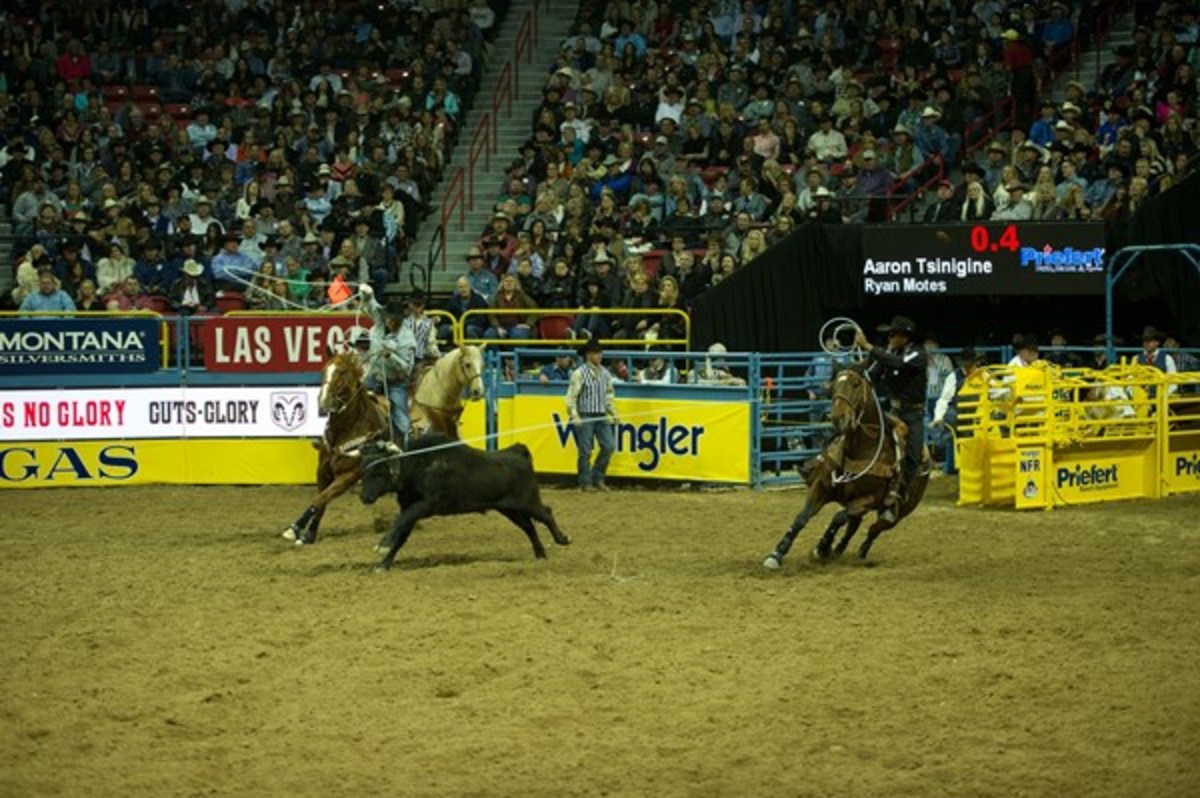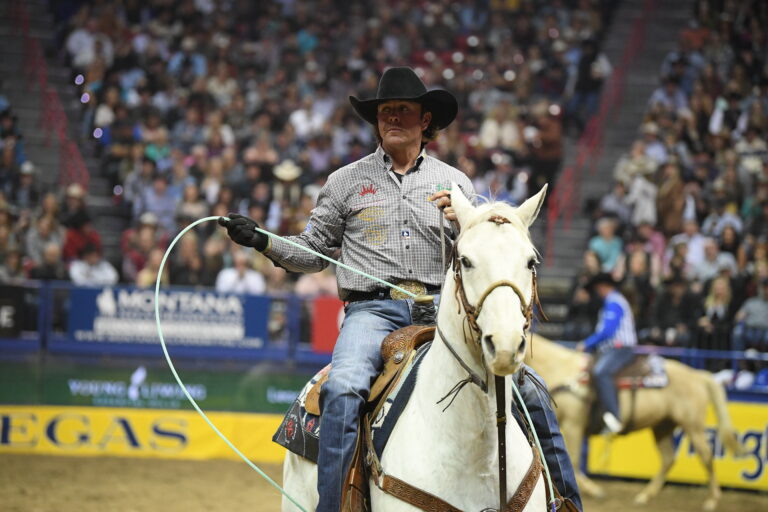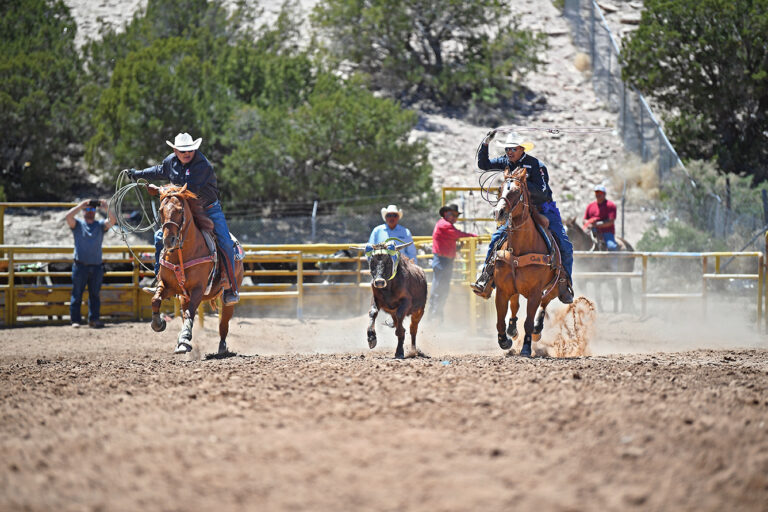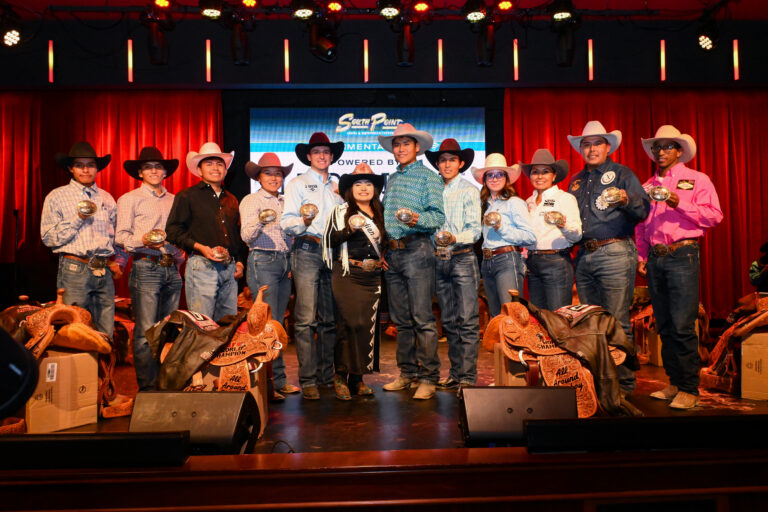Aaron Tsinigine’s jackpot partners still can’t spell his name on their entry cards. But thanks to his breakout 2013 season, more people finally know how to say it. That’s “Sin-i-ginney,” for the record.

The Navajo cowboy qualified for the Ram National Circuit Finals Rodeo on his permit at just 19 and won the Indian National Finals Rodeo heeling for Erich Rogers in 2010 (they were 20.22 seconds on four).
That was “right before Erich went famous,” according to 26-year-old Tsinigine, who has always been one leg of the toughest trio of Navajo headers in history. He and Rogers, 27, and Derrick Begay, 30, grew up in opposite corners of the Navajo Nation but today all live within a few blocks of each other on the edge of Fort McDowell Yavapai Nation near Scottsdale, Ariz.
However, while Begay was racking up six NFR appearances and Rogers three, Tsinigine was struggling to average $26,000 a season. Then last year he bought Lee’s Smart Bombay, whom the local Native kids call “Smudgey.”
The 11-year-old gelding came from Kirby Anderson, a 5-plus header who grew up on cutting horses in Wyoming. Anderson, an engineer from Boerne, Texas, enjoys buying talented young head horses and finishing them right.
“He scores great and leaves flat and tries hard,” said Tsinigine, who picked up the horse in December 2012. “He’s good in every situation and knows every play. He tries to help me every time.”
Smudgey helped Tsinigine rake in so many big paychecks last season that Clay O’Brien Cooper asked him to rope late last summer. More wins followed as Tsinigine had a career year and fell less than $4,500 short of a first NFR qualification.
“I remember when I was a kid in Tuba City, going to slack at Flagstaff and seeing Al Bach and Rich [Skelton] and Speed [Williams] and dreaming about being like them,” said Tsinigine. “But I never thought I’d be out here bumping heads with them. Then I found myself at the steering wheel while Clay O slept in the seat next to me.”
Cooper’s spiritual and moral support was huge, and Tsinigine also gives a shout out to his uncle Lee Tsinigine for always having his back—and to Terry Doka, who provides practice cattle for Tsinigine and Begay in return for their help capturing wild cattle.
Two weeks after Tsinigine won a hundred grand at the U.S. Open, he handed his horse back to Anderson to use at the World Series Finale in Las Vegas. The loan-back was part of the original deal, and Tsinigine stuck to his word.
“On the first steer, that horse felt the same as the day I stepped off him,” marveled Anderson. “He was still free and ran to the hip and waited for me to dally.”
Anderson, who bought the Roman-nosed horse as a 4-year-old out of the Western States Performance Horse Sale in Reno, is excited about a 5-year-old he owns now with Smudgey’s same Peppy San Badger breeding.
As for Tsinigine, he’s just grateful.“It took me until the U.S. Open to finally pay that horse off,” said Tsinigine.
“Without Kirby helping me all that time, I’d still be struggling. Without that horse, I’m nothing. None of us headers are anything without the horse.”
“I finished 17th last year and that sparked me up more than anything,” said Tsinigine, who will kick off 2014 with Walt Woodard. “Before that, I thought a guy could get by just team roping. But I’d been going down the road and was so tired of coming up short. I began to realize you have to actually make it your job and be serious about it. I’ve changed a lot of things.”
One was partnering with veterans. Another was finding a great horse. Then the goal was to keep the horse working. Instead of practicing 3- and 4-second runs all the time, Tsinigine switched to the mindset of catching two horns every time. His percentages soared and his horse kept working.
“I used to love to reach, but I’m getting older and learning to go catch and try to win second or third and put food on the table,” he said.
With all that ironed out, he took a trip to Texas where yet another revelation hit him.“I was doing things to just better everything about my game,” he said. “And then I stayed at Turtle Powell’s and went to Luke Brown’s to practice. Everybody down there ropes from 8 a.m. to sundown with 10 to 15 horses tied up. I used to think once or twice a week was practicing! So I went home and went to working on it as hard as everybody else. Team roping wasn’t a game anymore; it was what I did for a living.”











